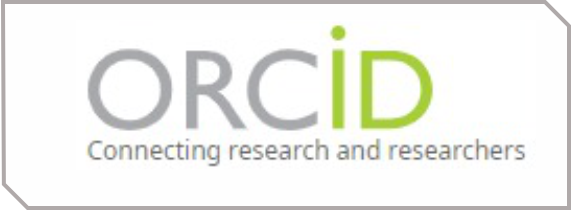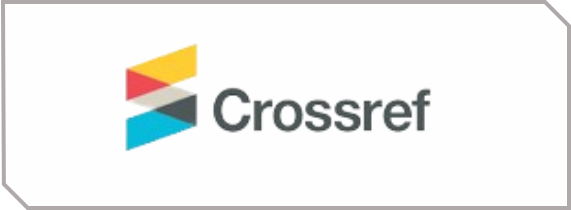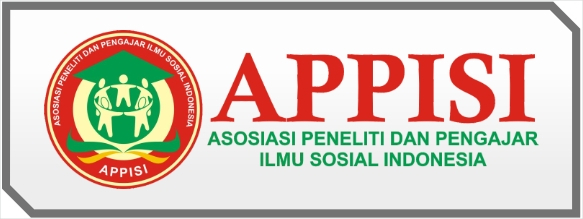Systematic Literature Review: TPACK-Integrated Design Thinking in Education
DOI:
https://doi.org/10.55606/ijel.v2i1.57Keywords:
Design Thinking, TPACK, Education, Systematic Literature ReviewAbstract
This research aims to analyze design thinking integrated with technological pedagogical content knowledge (TPACK) in ducation. This research is a type of systematic literature review (SLR) research with the PRISMA method. The data sources in the study came from 10 national and international journals published between 2018- 2023 and indexed by SINTA, Scopus, and WOS. The search for data sources comes from Google Scholar, MPDI, ScienceDirect, Wiley, and Eric. The analysis shows that 1) TPACK-integrated design thinking has a positive impact on the learning process, and 2) design thinking integrated with TPACK in education has a variety of forms both in theory and practice. Based on these findings, it can be concluded that the concept of design thinking integrated with TPACK is very necessary to be developed in the education system in Indonesia. Design thinking integrated with TPACK is able to encourage students' critical thinking skills and creativity in learning.
References
Adi, W. C., Saefi, M., Setiawan, M. E., & Sholehah, N. (2021). The Impact of Covid-19 to Biology Teacher Education : Emergency Distance Learning at Islamic Universities in Indonesia. Journal ofTurkish Science Education, 23(10), 60–76.
Aguilera, D., & Ortiz-Revilla, J. (2021). Stem vs. Steam education and student creativity: A systematic literature review. Education Sciences, 11(7). https://doi.org/10.3390/educsci11070331
Ajloni, M., Psych, M. E. D., & Toole, M. O. (2021). Adopting TPACK to Video Technology in the Context of the Jordanian Education System. 20(2), 1–13.
Akyuz, D. (2018). Computers & Education Measuring technological pedagogical content knowledge ( TPACK ) through performance assessment. Computers & Education, 125(May 2017), 212–225. https://doi.org/10.1016/j.compedu.2018.06.012
Albay, E. M., & Eisma, D. V. (2021). Social Sciences & Humanities Open Performance task assessment supported by the design thinking process : Results from a true experimental research. Social Sciences & Humanities Open, 3(1), 100116. https://doi.org/10.1016/j.ssaho.2021.100116
Al-Dein Al-Zebdyah, S. W. (2022). English Language Teachers’ Perceptions about Design Thinking. Journal of Curriculum and Teaching, 11(4), 97–107. https://doi.org/10.5430/jct.v11n4p97
Allison W. McCulloch et a. (2017). DESIGN PRINCIPLES FOR THE DEVELOPMENT OF PROFESSIONAL NOTICING OF STUDENTS’ TECHNOLOGICAL MATHEMATICAL PRACTICES. 2018 International Conference on Computing Sciences and Engineering, ICCSE 2018 - Proceedings, 16(3), 1–6. https://www.weforum.org/whitepapers/cyber-resilience-in-the-oil-and-gas-industry-playbook-for-boards-and-corporate-officershttps://doi.org/10.1016/j.jnca.2018.04.004http://aisel.aisnet.org/pacis2007/73
Apra, T., 1, S., Razak, A., Arsih, F., Sepriyani, E. M., & Hernaya, N. (2021). Meta-Analysis: Science Learning Based on Local Wisdom Against Preserving School Environments During the Covid-19 Pandemic. Journal of Biology Education, 10(2), 244–251. http://journal.unnes.ac.id/sju/index.php/ujbe
Argaw, A. S., Haile, B. B., Ayalew, B. T., & Kuma, S. G. (2017). The effect of problem based learning (PBL) instruction on students’ motivation and problem solving skills of physics. Eurasia Journal of Mathematics, Science and Technology Education, 13(3), 857–871. https://doi.org/10.12973/eurasia.2017.00647a
Article, R., & Panke, S. (2019). Design Thinking in Education : Perspectives , Opportunities and Challenges. 2018, 281–306.
Ashton, J., & Newman, L. (2019). An unfinished symphony: 21st century teacher education using knowledge creating heutagogies. British Journal of Educational Technology, 37(6), 825–840. https://doi.org/10.1111/j.1467-8535.2006.00662.x
Atun, H. (2019). The effects of programming education planned with TPACK framework on learning outcomes Ertuğrul USTA. 6(2), 26–36.
Auernhammer, J., & Roth, B. (2021). The origin and evolution of Stanford University ’ s design thinking : From product design to design thinking in innovation management. Journal of Product Innovation Management, 38, 623–644. https://doi.org/10.1111/jpim.12594
Aulia, D. M., Parno, & Kusairi, S. (2021). Pengaruh E-module Berbasis TPACK-STEM terhadap Literasi Sains Alat Optik dengan Model PBL-STEM Disertai Asesmen Formatif. Jurnal Riset Pendidikan Fisika, 6(1), 7–12. http://journal2.um.ac.id/index.php/jrpf/
Beier, M. E., Kim, M. H., Saterbak, A., Leautaud, V., Bishnoi, S., & Gilberto, J. M. (2019). The effect of authentic project-based learning on attitudes and career aspirations in STEM. Journal of Research in Science Teaching, 56(1), 3–23. https://doi.org/10.1002/tea.21465
Bene, R., & Mcneilly, E. (2020). GETTING RADICAL : USING DESIGN THINKING TO FOSTER COLLABORATION. 50–57.
Boyle, F., Walsh, J., Riordan, D., Geary, C., Kelly, P., & Broderick, E. (2022). education sciences REEdI Design Thinking for Developing Engineering Curricula.
Buphate, T., & Esteban, R. H. (2022). Using Ideation Discussion Activities in Design Thinking to Develop EFL Students ’ Speaking and Critical Thinking Abilities. 0672(June).
Celik, I. (2023). Computers in Human Behavior Towards Intelligent-TPACK : An empirical study on teachers ’ professional knowledge to ethically integrate artificial intelligence ( AI ) -based tools into education. Computers in Human Behavior, 138(May 2022), 107468. https://doi.org/10.1016/j.chb.2022.107468
Cesar, J., & Russo, R. D. F. S. M. (2018). Design Thinking Integrated in Agile Software Development : A Design Thinking Systematic Integrated in Agile Software Literature Review Development : A Systematic Literature Review. Procedia Computer Science, 138, 775–782. https://doi.org/10.1016/j.procs.2018.10.101
Chai, C. S. (2018). Teacher Professional Development for Science , Technology , Engineering and Mathematics ( STEM ) Education : A Review from the Perspectives of Technological Pedagogical Content ( TPACK ). The Asia-Pacific Education Researcher. https://doi.org/10.1007/s40299-018-0400-7
Chaidam, O., & Poonputta, A. (2022). Learning Achievement Improvement of 1st Grade Students by Using Problem-Based Learning (PBL) on TPACK MODEL. Journal of Education and Learning, 11(2), 43. https://doi.org/10.5539/jel.v11n2p43
Choi, B., & Young, M. F. (2021). TPACK-L : teachers ’ pedagogical design thinking for the wise integration of technology ABSTRACT. Technology, Pedagogy and Education, 00(00), 1–18. https://doi.org/10.1080/1475939X.2021.1906312
Chou, D. C. (2017). APPLYING DESIGN THINKING METHOD TO SOCIAL ENTREPRENEURSHIP PROJECT. Computer Standards & Interfaces. https://doi.org/10.1016/j.csi.2017.05.001
Davis, B. M. (2010). Creativity & Innovation in Business 2010 Teaching the Application of Design Thinking to Business. COINs2009: Collaborative Innovation Networks Conference Creativity, 2(4), 6532–6538. https://doi.org/10.1016/j.sbspro.2010.04.062
Deng, P. (2022). How does culture influence innovation ? A systematic literature review. Management Decision, 56(5), 1–20. https://doi.org/10.1108/MD-05-2017-0462
Dewi, N. R., Rusilowati, A., Saptono, S., Haryani, S., & Wiyanto, W. (2021). Technological , Pedagogical , Content Knowledge ( TPACK ) Research Trends : A Systematic Literature Review of Publications Between 2010 - 2020. 18(4), 589–604.
Effendi-hasibuan, M. H., & Mukminin, A. (2019). The Inquiry-based Teaching Instruction ( IbTI ) in Indonesian Secondary Education : What Makes Science Teachers Successful Enact the Curriculum ? Journal of Turkish Science Education, 16(1), 18–33. https://doi.org/10.12973/tused.10263a
Elfira, I., & Santosa, T. A. (2023). Literature Study : Utilization of the PjBL Model in Science Education to Improve Creativity and Critical Thinking Skills. Jurnal Penelitian Pendidikan IPA, 9(1), 133–143. https://doi.org/10.29303/jppipa.v9i1.2555
Elsbach, K. D., & Stigliani, I. (2018). Design Thinking and Organizational Culture : A Review and Framework for Future Research. https://doi.org/10.1177/0149206317744252
Faiz, F. R. F., Nurhadi, N., & Rahman, A. (2021). Pembentukan Sikap Disiplin Siswa Pada Sekolah Berbasis Asrama. QALAMUNA: Jurnal Pendidikan, Sosial, Dan Agama, 13(2), 309–326. https://doi.org/10.37680/qalamuna.v13i2.902
Ferdyan, R., Vauzia, Zulyusuri, Santosa, T. A., & Razak, A. (2021). Model Pendidikan Lingkungan Hidup: Kegiatan Pembelajaran pada Siswa Sebagai Bagian dari Lingkungan di Era New Normal. Natural Science: Jurnal Penelitian Bidang IPA Dan Pendidikan IPA, 7(1), 51–61. https://ejournal.uinib.ac.id/jurnal/index.php/naturalscience/article/view/2453
Ferry, D., Santosa, T., & Kamil, D. (2020). Pengetahuan Mahasiswa Institut Agama Islam Negeri Kerinci Tentang Teori Asal Usul Manusia. BIOEDUCA : Journal of Biology Education, 1(1), 11. https://doi.org/10.21580/bioeduca.v1i1.4945
Fradila, E., Razak, A., Santosa, T. A., Arsih, F., & Chatri, M. (2021). Development Of E-Module-Based Problem Based Learning (PBL) Applications Using Sigil The Course Ecology And Environmental Education Students Master Of Biology. International Journal of Progressive Sciences and Technologies (IJPSAT, 27(2), 673–682. http://ijpsat.ijsht-journals.org
Gallico, D. (2021). E-LEARNING DESIGN THINKING AND DESIGN DRIVEN INNOVATION. 91–98.
Galoyan, T., Barany, A., & Donaldson, J. P. (2022). Connecting Science , Design Thinking , and Computational Thinking through Sports. 15(1), 601–618.
Gashoot, M., Eve, B., & Mohamed, T. (2021). Implementing Technology for Teaching : The Use of a Mobile / Tablet Approach for Enhancing Students ’ Learning ( Design Interaction ) Technology-Enhanced Learning ( TEL ). https://doi.org/10.1177/00220574211016397
Gill, C. H. D., & Berezina, E. (2020). School performance in three South East Asian countries: lessons in leadership, decision-making and training. European Journal of Training and Development, 45(2-3), 136–148. https://doi.org/10.1108/EJTD-01-2020-0014
Gonen, E. (2019). Development Review Tim Brown , Change by Design : How Design Thinking Transforms Organizations and Inspires Innovation ( 2009 ) Tim Brown , Change by Design : How Design Thinking Transforms Organizations. 4(2). https://doi.org/10.23860/MGDR-2019-04-02-08
Guaman-quintanilla, S., Everaert, P., Chiluiza, K., & Valcke, M. (2022). education sciences Fostering Teamwork through Design Thinking : Evidence from a Multi-Actor Perspective.
Gustavo, L., Rolando, R., Salvador, D. F., Flavia, R., Rolando, R., Roberto, M., Pinto, M., & Luz, D. (2021). TPACK for meaningful learning survey : “ paths ” for professional development of biology teachers in Brazil. 20(2), 169–181.
Hwee, J., Koh, L., Chai, C. S., & Tay, L. Y. (2014). TPACK-in-Action: Unpacking the Contextual Influences of Teachers’ Construction of Technological Pedagogical Content Knowledge (TPACK). Computers & Education. https://doi.org/10.1016/j.compedu.2014.04.022
Hwee, J., Koh, L., Sing, C., Wong, C., & Hong, B. H. (2015). Technological Pedagogical Content Knowledge ( TPACK ) and Design Thinking : A Framework to Support ICT Lesson Design for 21st Century Learning. The Asia-Pacific Education Researcher. https://doi.org/10.1007/s40299-015-0237-2
Ibrohim, I., Purwaningsih, E., Munzil, M., & Hidayanto, E. (2022). Possible links between Indonesian science teacher ’ s TPACK perception and demographic factors : Self-reported survey. 18(9).
Ichsan, Suhaimi, Amalia, K. N., Santosa, T. A., & Yulianti, S. (2022). Pengaruh Model Pembelajaran Problem Based Learning Berbaisis TPACK Terhadap Ketrampilan Literasi Sains Dalam Pembelajaran IPA Siswa Tingkat SD Sampai SMA: Sebuah Meta-Analisis. Jurnal Pendidikan Dan Konseling, 4(5), 2173–2181.
Ichsan, Yayat Suharyat, Tomi Apra Santosa, E. (2023). The Effectiveness of STEM-Based Learning in Teaching 21 st Century Skills in Generation Z Student in Science Learning : A. Jurnal Penelitian Pendidikan IPA, 9(1), 150–166. https://doi.org/10.29303/jppipa.v9i1.2517
Jobst, B., Endrejat, P., & Meinel, C. (2011). DOES DESIGN THINKING MEDIATE CRITICAL INNOVATION SKILLS ? AN INTERVIEW APPROACH TO SYNTHESIZE FIVE COMPETENCIES TAUGHT AT THE D . SCHOOL. INTERNATIONAL CONFERENCE ON ENGINEERING AND PRODUCT DESIGN EDUCATION, September, 1–8.
Junior, W. G., Marasco, E., Kim, B., & Behjat, L. (2020). SUPPORTING DESIGN THINKING THROUGH A GAME- BASED PEDAGOGY IN ENTREPRENEURSHIP EDUCATION.
Kale, U., Yuan, J., & Roy, A. (2020). To design or to integrate ? Instructional design versus technology integration in developing learning interventions. In Educational Technology Research and Development (Issue 0123456789). Springer US. https://doi.org/10.1007/s11423-020-09771-8
Khan, N., Sarwar, A., Chen, T. B., & Khan, S. (2022). Connecting digital literacy in higher education to the 21st century workforce. Knowledge Management and E-Learning, 14(1), 46–61. https://doi.org/10.34105/j.kmel.2022.14.004
Kusuma. (2022). How Does a TPACK-related Program Support EFL Pre- service Teachers ’ Flipped Classrooms ? LEARN Journal: Language Education and Acquisition Research Network, 15(2), 301–325.
Kwon, J., Choi, Y., & Hwang, Y. (2021). Enterprise Design Thinking : An Investigation on User-Centered Design Processes in Large Corporations.
Ladachart, L., Radchanet, V., & Phothong, W. (2022). Design Thinking Mindsets Facilitating Students ’ Learning of Scientific Concepts in Design-Based Activities. 19(1), 1–16.
Lin, W. (2021). Design Thinking as an Educational Innovation Way : A Case Study of Design for Change Taiwan ( DFC Taiwan ). 333–348.
Littlefield, C., & Zimmerman, H. T. (2017). USING A DESIGN MODEL AS A SCAFFOLD TO CREATE LEARNING TOOLS : A CASE STUDY WITH WE ! CONNECT CARDS. Internasional Journal of Design For Learning, 8(2), 1–13.
M. Karim , Syafrul Antoni2, Karlini Oktarina3, T. A. S. (2022). The Effect of Teacher Professionalism in Islamic Religious Education in the Era of Society 5.0 in Indonesia: A Meta-Analysis. Jurnla Pendidikan Dan Konseling, 5(2), 1349–1358.
Matthee, M., Turpin, M., & Turpin, M. (2019). Teaching Critical Thinking , Problem Solving , and Design Thinking : Preparing IS Students for the Future Teaching Critical Thinking , Problem Solving , and Design Thinking : Preparing IS Students for the Future. Journal of Information Systems Education, 30(December).
Maulida, N., Sa’adah, S., & Ukit, U. (2021). Peningkatan Keterampilan Berkomunikasi Siswa Melalui Pembelajaran Berorientasi TPACK Dengan Blended Learning Pada Materi Sistem Gerak. Jurnal BIOEDUIN: Jurnal Program Studi Pendidikan Biologi, 11(2), 79–87.
Mcgann, M., Blomkamp, E., & Lewis, J. M. (2018). The rise of public sector innovation labs : experiments in design thinking for policy. Policy Sciences, March. https://doi.org/10.1007/s11077-018-9315-7
Meepung, T., & Pratsri, S. (2022). Virtual Commerce Management Using Design Thinking Process to Promote Digital Entrepreneurship for Education Studies. 15(2), 73–88. https://doi.org/10.5539/ies.v15n2p73
Melles, G., Vere, I. De, & Misic, V. (2011). Socially responsible design : thinking beyond the triple bottom line to socially responsive and sustainable product design. 7(December), 143–154.
Mohamad, O., & Ahmad, A. (2022). Employment the Word Cloud in Brainstorming via the Web and Its Effectiveness in Developing the Design Thinking Skill. 15(1), 1045–1064.
Muhafidin, D. (2022). Policy strategies to reduce the social impact of stunting during the COVID-19 pandemic in Indonesia. Journal of Social Studies Education Research, 13(2), 320–342.
MÜLLER, K. T. and R. M. (2011). UNDERSTANDING DESIGN THINKING: A PROCESS MODEL BASED ON METHOD ENGINEERING. INTERNATIONAL CONFERENCE ON ENGINEERING AND PRODUCT DESIGN EDUCATION, September, 1–6.
Mundia, L. (2010). Implementation of SPN21 Curriculum in Brunei Darussalam : A Review of Selected Implications on School Assessment Reforms. 3(2), 119–129.
Nguyen THI-HUYEN, Pham XUAN-LAM, N. T. T. T. (2021). The Impact of Design Thinking on Problem Solving and Teamwork Mindset in A Flipped Classroom. Eurasian Journal of Educational Research, 96(3), 30–50. https://doi.org/10.14689/ejer.2021.96.3
Oktarina, K., Santosa, T. A., Razak, A., & Ahda, Y. (2021). Meta-Analysis : The Effectiveness of Using Blended Learning on Multiple Intelligences and Student Character Education during the Covid-19 Period. IJECA International Journal of Education & Curriculum Application, 4(3), 184–192.
Oktiningrum, W., & Hartono, Y. (2016). DEVELOPING PISA- LIKE MATHEMATICS TASK WITH INDONESIA NATURAL AND CULTURAL HERITAGE AS CONTEXT TO ASSESS. 7(1), 1–10.
Oxman, R. (2017). Thinking difference: Theories and models of parametric design thinking. Design Studies, 52, 4–39. https://doi.org/10.1016/j.destud.2017.06.001
Polat, S., & Bayram, H. (2022). An Investigation into Design Thinking Skills of Social Studies Teachers. Pegem Egitim ve Ogretim Dergisi, 12(3), 208–219. https://doi.org/10.47750/pegegog.12.03.22
Pratomo, L. C. (2021). The Effectiveness of Design Thinking in Improving Student Creativity Skills and Entrepreneurial Alertness. 14(4), 695–712.
Razak, Abdul, Santosa, Tomi Apra, Lufri., et al. (2021). Meta-Analisis: Pengaruh Soal HOTS (Higher Order Thinking Skill) Terhadap Kemampuan Literasi Sains dan Lesson Study Siswa Pada Materi Ekologi dan Lingkungan Pada Masa Pandemi Covid-19. Bioedusiana, 6(1), 79–87.
Rodriguez, S. L., Doran, E. E., Rachel, E., Martinez-podolsky, E., Paul, S., Rodriguez, S. L., Doran, E. E., Friedensen, R. E., Martinez-podolsky, E., & Paul, S. (2020). Inclusion & Marginalization : How Perceptions of Design Thinking Pedagogy Influence Computer , Electrical , and Software Engineering Identity To cite this article : Inclusion & Marginalization : How Perceptions of Design Thinking Pedagogy Influence Comput.
Santos, J. M., & Castro, R. D. R. (2021). Social Sciences & Humanities Open Technological Pedagogical content knowledge ( TPACK ) in action : Application of learning in the classroom by pre-service teachers ( PST ). Social Sciences & Humanities Open, 3(1), 100110. https://doi.org/10.1016/j.ssaho.2021.100110
Santosa, T. A., Razak, A., Anhar, A., & Sumarmin, R. (2021). The Effectiveness of the Blended Learning Model on Student Learning Outcomes in Zoology Subjects in the Covid-19 Era. Pendidikan Biologi, 7(1), 77–83.
Santosa, T. A., Sepriyani, E. M., Lufri, L., Razak, A., Chatri, M., & Violita, V. (2021). Analisis E-Learning Dalam Pembelajaran Evolusi Mahasiswa Pendidikan Biologi Selama Pandemi Covid-19. Edumaspul: Jurnal Pendidikan, 5(1), 66–70. https://doi.org/10.33487/edumaspul.v5i1.1027
SANTOSA, T. A., & YULIANTI, S. (2020). Pengaruh Pemberian Kuis Terhadap Peningkatan Motivasi Belajar Biologi Siswa Di Sma Negeri 7 Kerinci. Edusaintek : Jurnal Pendidikan, Sains Dan Teknologi, 7(2), 1–18. https://doi.org/10.47668/edusaintek.v7i2.58
Schmid, M., Brianza, E., & Petko, D. (2021). Computers in Human Behavior Self-reported technological pedagogical content knowledge ( TPACK ) of pre-service teachers in relation to digital technology use in lesson plans. Computers in Human Behavior, 115(May 2020), 106586. https://doi.org/10.1016/j.chb.2020.106586
Schmidt, D. A., Thompson, A. D., Koehler, M. J., & Shin, T. S. (2009). Technological Pedagogical Content Knowledge ( TPACK ): The Development and Validation of an Assessment Instrument for Preservice Teachers. Journal of Research on Technology in Education, 42(2), 123–149.
Shi, L., & Jiang, L. (2022). How EFL teachers perceive and self-evaluate the knowledge components in forming Technological Pedagogical Content Knowledge ( TPACK ). 5(1), 1–15.
Sofianora, A., Suharyat, Y., & Santosa, T. A. (2023). PENGARUH PROFESIONALITAS GURU MATEMATIKA DALAM MENINGKATKAN KOMPETENSI SISWA ERA REVOLUSI INDUSTRI 5 . 0 DI INDONESIA : SEBUAH META-ANALISIS. Jurnal MATH-UMB.EDU, 10(2), 49–58.
Solodikhina, А., & Solodikhina, М. (2021). Developing an innovator ’ s thinking in engineering education. Education and Information Technologies, 0123456789. https://doi.org/10.1007/s10639-021-10709-7
Soysal, Y., & Soysal, S. (2023). Relationship Between a Teacher Educator ’ s Questions and the Development of Prospective Teachers ’ Critical Thinking. 38. https://doi.org/10.1177/20965311221107028
Studies, S., & Bilgiler, S. (2023). Thinking and Expression Skills Through Teaching Techniques Jehona Rrustemi 1 & Voglushe Kurteshi 2. Journal of Social Studies Education Researc, 14(1), 1–16.
Suganda, E., Latifah, S., Irwandani, Sari, P. M., Rahmayanti, H., Ichsan, I. Z., & Rahman, M. M. (2021). STEAM and Environment on students’ creative-thinking skills: A meta-analysis study. Journal of Physics: Conference Series, 1796(1). https://doi.org/10.1088/1742-6596/1796/1/012101
Suhaimi, Santosa, T. A., & Aprilisia, S. (2022). Analisis Pendekatan Saintifik Dalam Pembelajaran IPA Selama Pandemi Covid-19 di Sekolah Dasar. Jurnal Didika: Wahana Ilmiah Pendidikan Dasar, 8(1), 92–101.
Suharyat, Y., Santosa, T. A., Yulianti, S., & Amalia, K. N. (2022). International Journal of Education and Literature ( IJEL ) Literature Review : TPACK-Based Science Learning in Supporting Teacher Quality in Indonesia. 2014–2020.
Suprapto, N., Sukarmin, S., Puspitawati, R. P., Erman, E., Savitri, D., Ku, C., Mubarok, H., Programme, E., Surabaya, U. N., Programme, E., Surabaya, U. N., Programme, B. E., Surabaya, U. N., Programme, S. E., Surabaya, U. N., Programme, M., Surabaya, U. N., & Info, A. (2021). Research trend on TPACK through bibliometric analysis ( 2015-. 10(4), 1375–1385. https://doi.org/10.11591/ijere.v10i4.22062
Supriyadi, A., Satria, E., & Santosa, T. A. (2022). International Journal of Education and Literature ( IJEL ) E- ISSN : 2829-6249 P -ISSN : 2829-6656 Meta-analysis : The Effectiveness of the Integrated STEM Technology Pedagogical Content Knowledge Learning Model on the 21st Century Skills of High School S. International Journal of Education and Literature (IJEL).
Supriyadi, A., Suharyat, Y., Santosa, T. A., & Sofianora, A. (2023). The Effectiveness of STEM-Integrated Blended Learning on Indonesia Student Scientific Literacy : A Meta-analysis. International Journal of Education and Literature (IJEL), 2(1), 41–48.
Sutama, S. N. H. &. (2022). Pengembangan Perangkat dan Model Pembelajaran Berbasis TPACK Terhadap Kualitas Pembelajaran Daring Sari Nur Hayani 1 , Sutama 2. Jurnal Basicedu, 6(2), 2871–2882.
Syahrul, Y., & Palcomtech, P. (2019). PENERAPAN DESIGN THINKING PADA MEDIA KOMUNIKASI VISUAL PENGENALAN KEHIDUPAN KAMPUS BAGI MAHASISWA BARU. Jurnal Bahasa Rupa, 2(2), 109–117.
Todoroff, E. C., Shealy, T., Milovanovic, J., Godwin, A., & Paige, F. (2021). Comparing Design Thinking Traits between National Samples of Civil Engineering and Architecture Students. J. Civ. Eng. Educ., 147(2), 1–15. https://doi.org/10.1061/(ASCE)EI.2643-9115.0000037
Tramonti, M., & Dochshanov, A. M. (2023). applied sciences Design Thinking as an Auxiliary Tool for Educational Robotics Classes.
Umbara, U., & Suryadi, D. (2019). Re-interpretation of mathematical literacy based on the teacher’s perspective. International Journal of Instruction, 12(4), 789–806. https://doi.org/10.29333/iji.2019.12450a
Vallis, C., & Redmond, P. (2021). Introducing design thinking online to large business education courses for twenty-first century learning. Journal of University Teaching and Learning Practice, 18(6), 212–232. https://doi.org/10.53761/1.18.6.14
Waidelich, L., Richter, A., Koelmel, B., & Bulander, R. (2018). A systematic literature review of current Design Thinking models in practice. June. https://doi.org/10.1109/ICE.2018.8436281
Wati, D. A., Pranawa, S., & Rahman, A. (2020). Upaya Pengembangan Soft Skill Siswa Sma Melalui Pramuka. Perspektif Ilmu Pendidikan, 34(2), 117–124. https://doi.org/10.21009/pip.342.6
Wrigley, C., Mosely, G., & Tomitsch, M. (2018). Design Thinking Education : A Comparison of Massive Open Online Courses. She Ji: The Journal of Design, Economics, and Innovation, 4(3), 275–292. https://doi.org/10.1016/j.sheji.2018.06.002
Wrigley, C., Wrigley, C., & Straker, K. (2015). Design Thinking pedagogy : the Educational Design Ladder Design Thinking pedagogy : the Educational Design Ladder. November. https://doi.org/10.1080/14703297.2015.1108214
Xiao, Y., & Watson, M. (2019). Guidance on Conducting a Systematic Literature Review. Journal of Planning Education and Research, 39(1), 1–20. https://doi.org/10.1177/0739456X17723971
Yusuf, M., Witro, D., Diana, R., Santosa, T. A., Alfikri, A. ‘Alwiyah, & Jalwis, J. (2020). Digital Parenting to Children Using The Internet. Pedagogik Journal of Islamic Elementary School, 3(1), 1–14. https://doi.org/10.24256/pijies.v3i1.1277
Zulkifli, Z., Satria, E., Supriyadi, A., & Santosa, T. A. (2022). Meta-analysis : The effectiveness of the integrated STEM technology pedagogical content knowledge learning model on the 21st century skills of high school students in the science department. Psychology, Evaluation, and Technology in Educational Research, 5(1), 32–42.
Zulyusri el at. (2020). Problematika Dalam Pembelajaran Berbasis Virtual Learning Environmen t ( VLE ) Terhadap Siswa dan Guru SMA / MA Pada Materi Biologi. Journal of Education, 03(01), 93–103.



















